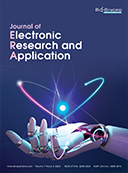Abstract
Garbage incineration is an ideal method for the harmless and resource-oriented treatment of urban domestic waste. However, current domestic waste incineration power plants often face challenges related to maintaining consistent steam production and high operational costs. This article capitalizes on the technical advantages of big data artificial intelligence, optimizing the power generation process of domestic waste incineration as the entry point, and adopts four main engine modules of Alibaba Cloud reinforcement learning algorithm engine, operating parameter prediction engine, anomaly recognition engine, and video visual recognition algorithm engine. The reinforcement learning algorithm extracts the operational parameters of each incinerator to obtain a control benchmark. Through the operating parameter prediction algorithm, prediction models for drum pressure, primary steam flow, NOx, SO2, and HCl are constructed to achieve short-term prediction of operational parameters, ultimately improving control performance. The anomaly recognition algorithm develops a thickness identification model for the material layer in the drying section, allowing for rapid and effective assessment of feed material thickness to ensure uniformity control. Meanwhile, the visual recognition algorithm identifies flame images and assesses the combustion status and location of the combustion fire line within the furnace. This real-time understanding of furnace flame combustion conditions guides adjustments to the grate and air volume. Integrating AI technology into the waste incineration sector empowers the environmental protection industry with the potential to leverage big data. This development holds practical significance in optimizing the harmless and resource-oriented treatment of urban domestic waste, reducing operational costs, and increasing efficiency.
References
Wang S, Wu Q, 2022, Research on Economic and Social Feasibility Evaluation of Power Generation Project by Waste Incineration. Engineering Construction and Design, 2022(11): 233–235.
Li X, Lu S, 2001, Analysis of the Calorific Value of Some Municipal Solid Waste in China. Chinese Environmental Science, 21(2): 156–160.
Liu Y, Li T, 2005, Implement Secondary Pollution Control System Technology Based on Waste Incineration. Microcomputer Information, 2005(9): 26–28.
Peng L, Lin Y, Yang Y, 2004, Discussion of Related Technologies in Complex System Control. Journal of Southwest Normal University (Natural Science Edition), 2004(6): 1066–1068.
Zhang C. Variable Cycle Engine Control Based on Deep Reinforcement Learning. 2022, Shenyang University of Aeronautics and Astronautics.
Lin H, 2016, Analysis of Urban Power Generation Technology of Domestic Waste Incineration. Low Carbon World, 2016(20): 12–13.
Tang XY, Cao C, Wang YX, et al., 2021, Computing Power Network: The Architecture of Convergence of Computing and Networking Towards 6G Requirement. China Communications, 18(2): 175–185.
Lei B, Zhao Q, Zhao H, 2021, Overview of Edge Computing and Computing Power Networks. ZTE Communications Technology, 27(3): 3–6.
Lei B, Liu Z, Wang X, et al., 2019, New Edge Computing Solution Based on Cloud, Network and Edge Integration: Computing Power Network.Telecommunications Science, 35(9): 44–51.
He T, Yang Z, Cao C, et al., 2022, Analysis of Several Key Technical Issues in the Development of Computing Power Networks. Telecommunications Section Science, 38(6): 62–70.
Li L, Zhu R, Sui L, et al., 2023, A Review of Reinforcement Learning Methods for Intelligent Cluster Systems. Journal of Computer Science, 2023: 1–24.
